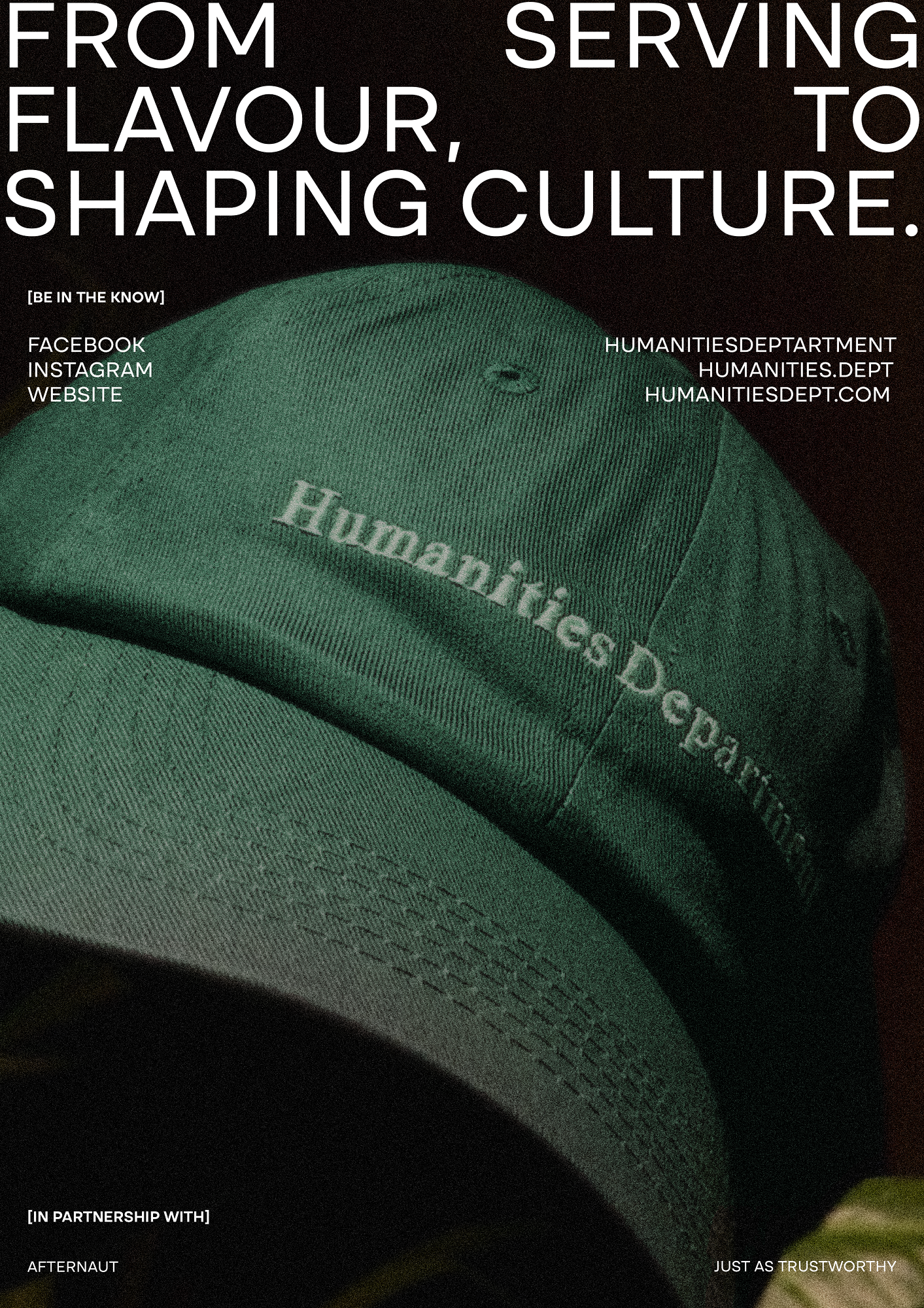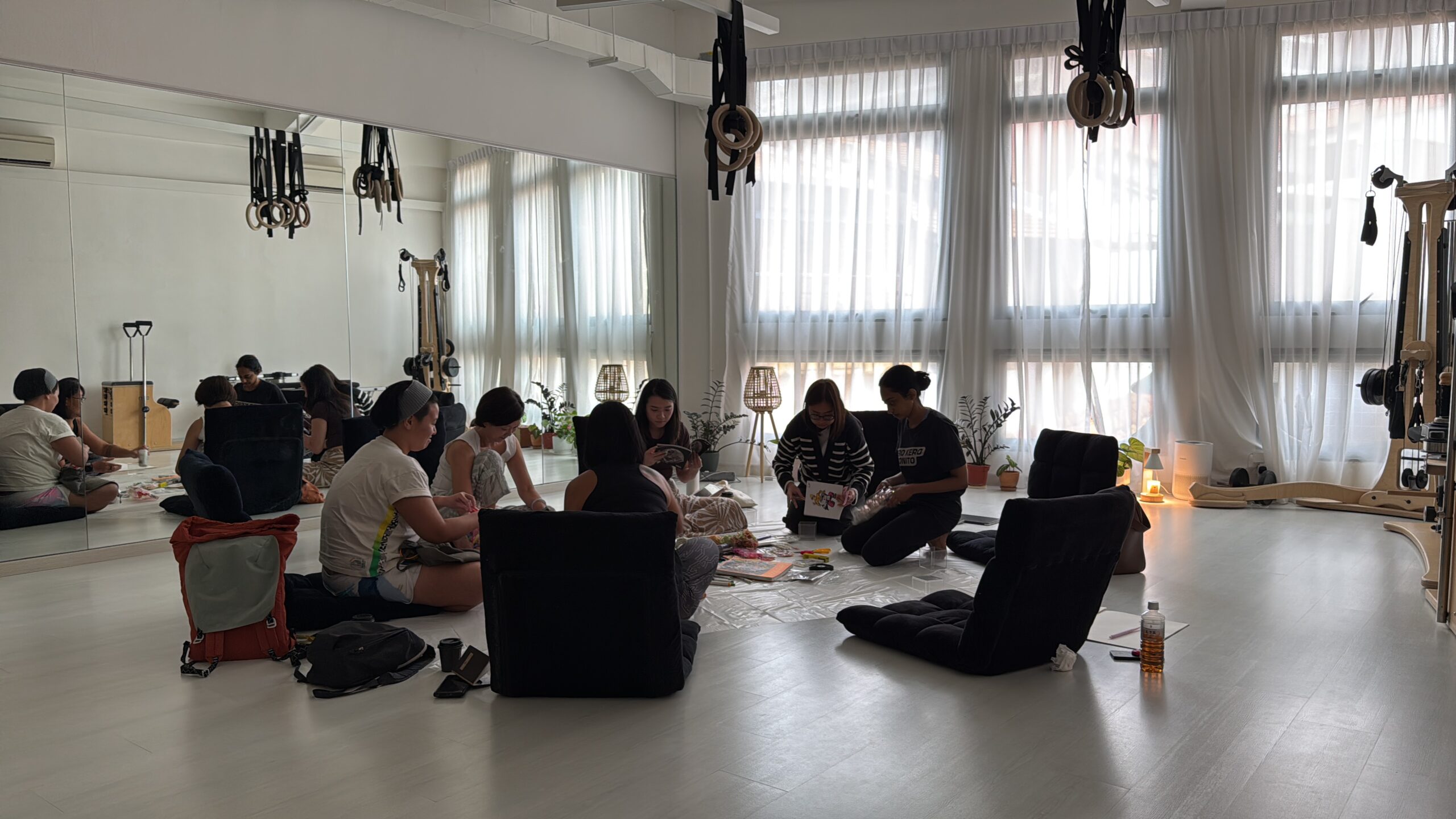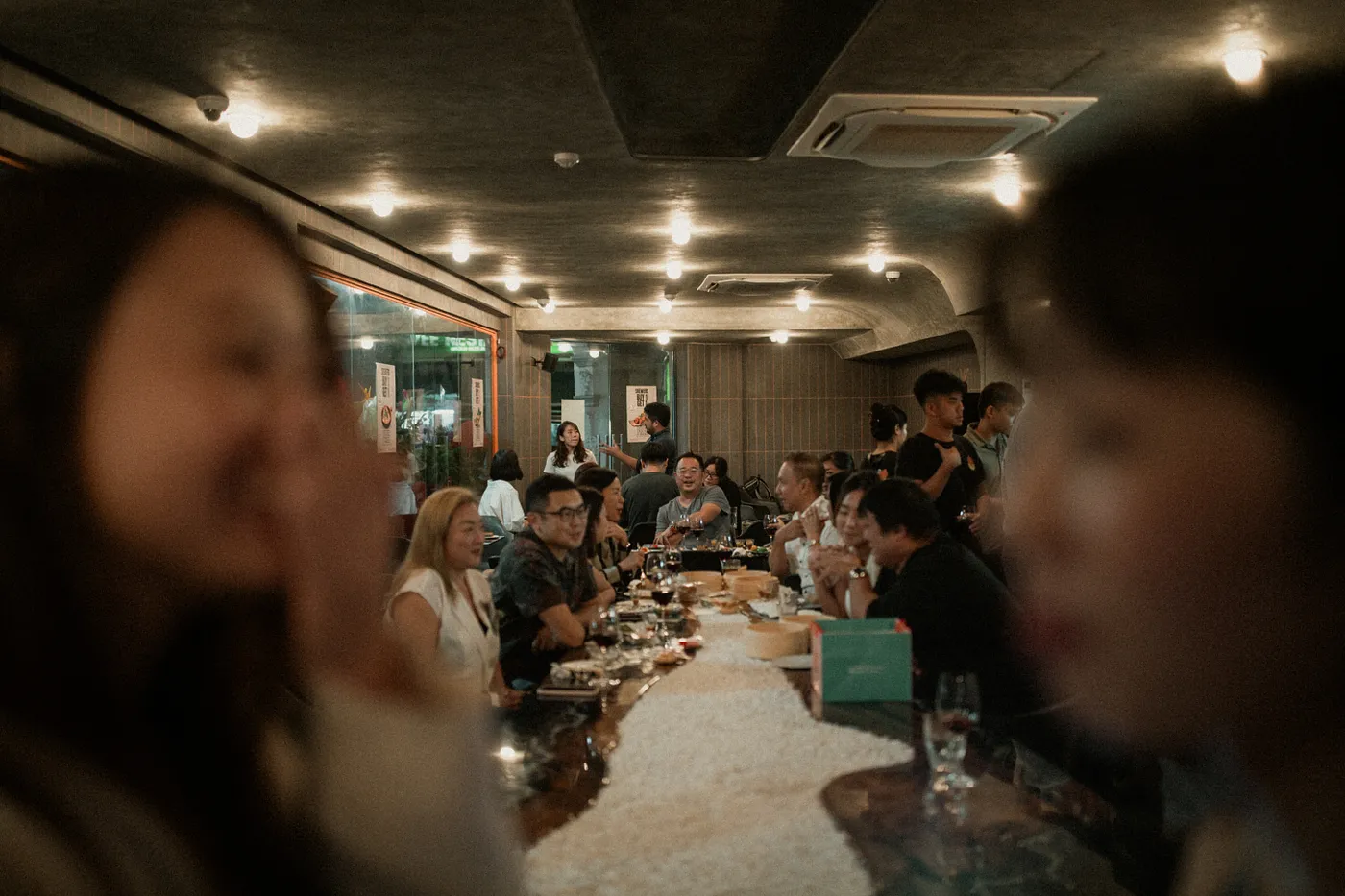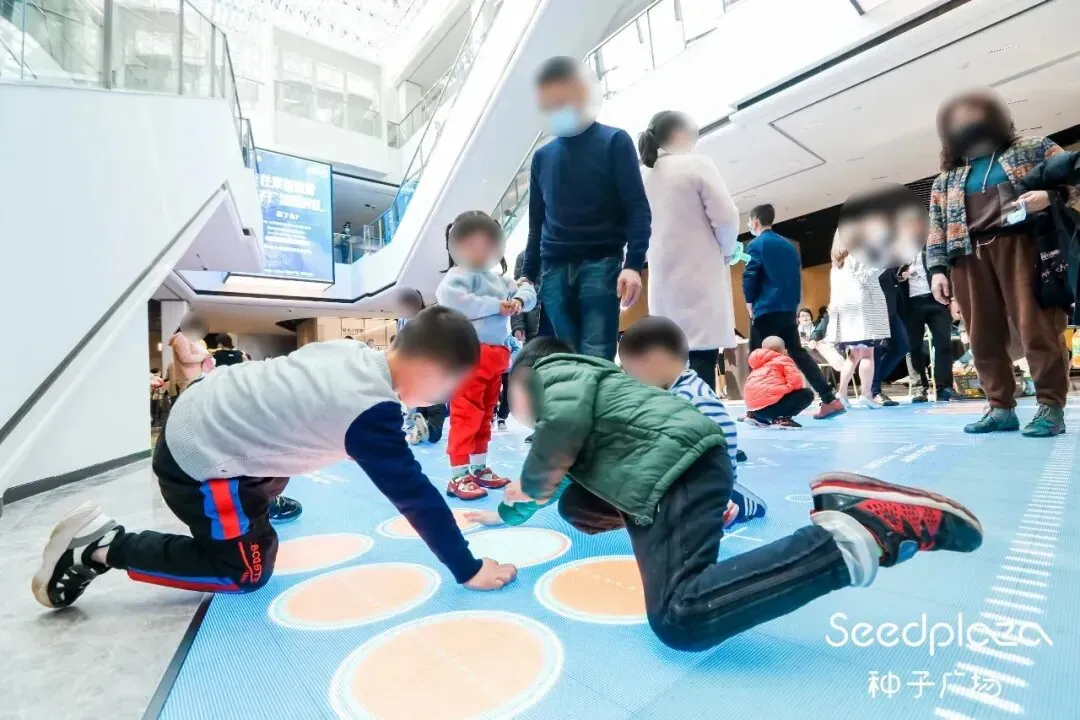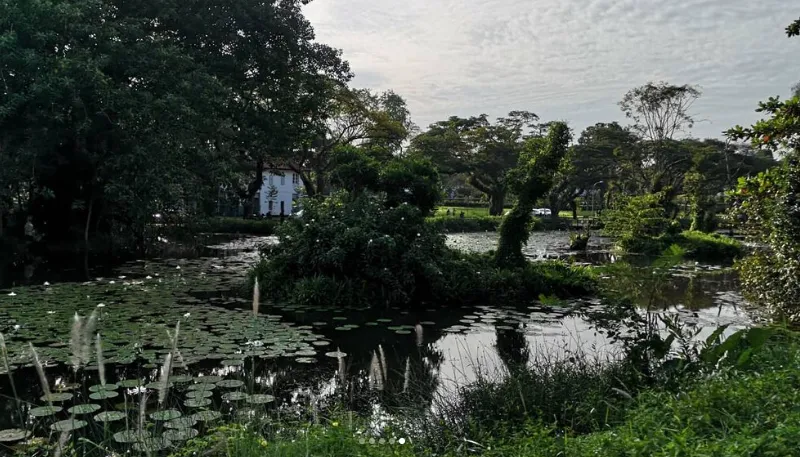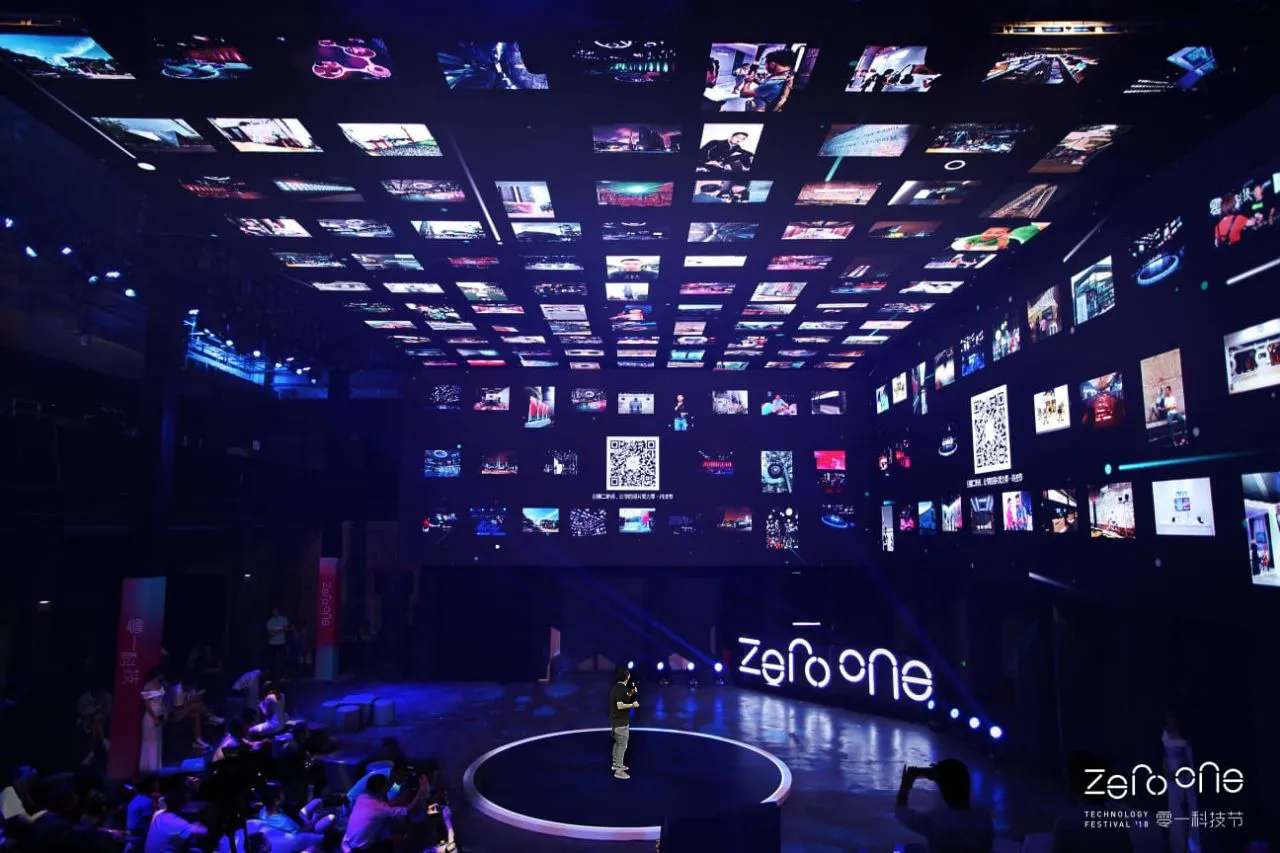Linkways and sheltered walkways are familiar and necessary structures in our heartlands to create more comfortable access points and shelters from the elements of tropical weather. The Afternaut designed Sprout@AMK, which provides a sheltered space between HDB blocks and shops in Ang Mo Kio Central, but it is also an innovative incubator hub of businesses with a wide range of lifestyle offerings.
The Social Kitchen ends the year on a high note, and steps into 2025 sporting a new look, a new brand name, and a new partner — The Afternaut. Besides refreshing its spaces with a trendy and more street ready look, the new brand also teases a series of new merchandise and exciting plans to come.
One leads to the other — the tripartite relationship between Placemaking, Community Building, & Social Wellness.
Aptly named A Mindful Kampong, the retreat was curated with the intention of celebrating the elements of a ‘kampong’ into the similarly named neighborhood — the spirit of community, a culture of togetherness and fostering of genuine human connections. Through the programme, we wanted to re-introduce the neighbourhood as a warm and welcoming one; one that houses a number of safe spaces where individuals could — for even just a moment — put away their worries and facades, and connect with other individuals, or even within themselves, on a human level. We titled this inaugural edition of A Mindful Kampong ‘The Initiation’. For this initiatory session, we sought to induct attendees into some of the most sought after wellness modalities today in a holistic and coherent manner.
We thought that rewilding would be hard in urban Singapore, but we’ve learned that rewilding doesn’t only have to take place in places with vast natural landscapes. Rewilding in urban spaces is actually a very broad topic with a lot of different applications across work, ecology, and even our daily lives.
Together with our partners, MEIR Collective, we are working to repurpose an important part of Singapore to make it relevant and meaningful for future generations.
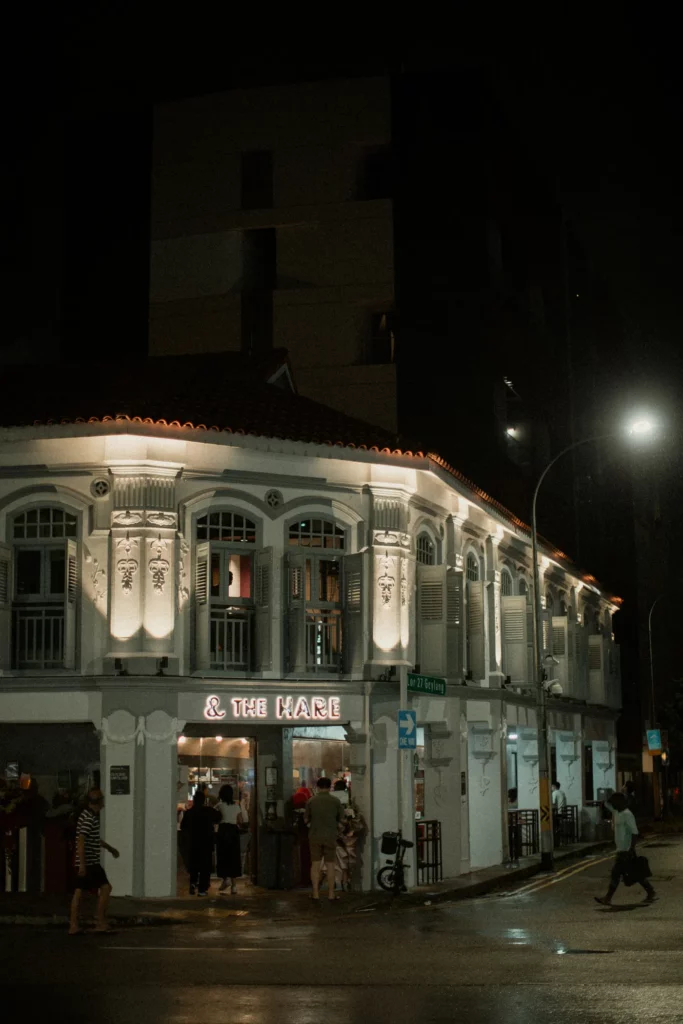
In the early evening hours of an ordinary Thursday, we and our partners at MEIR Collective gathered at the newly launched shophouse nestled in the corner of Lorong 27 alongside a small crowd of individuals, each with their own stake in Geylang. Our purpose was clear — to celebrate the start of an exciting new collaboration to placemake Geylang and to stir the imaginations of attendees.
What would Geylang look like, 50 years from today? What would you see strolling through the various lorongs? What kind of businesses or services would be operating in the district by then? Will the area still serve as an active red-light district?
For context, Geylang has gone through multiple changes over the years. The district began as a humble lemongrass plantation before transitioning into a commercial district lined with ornately carved shophouses. In the late 20th century, night crawlers began to prowl the streets and Geylang again transformed. This time, into a hub for “alternative activities”. Since then, the streets of Geylang would be bursting with eclectic energy and life after sunset.
However, this all changed when the pandemic hit. Restrictions and social distancing measures were imposed across the country and like a light switch, suddenly everything went off and the district was suddenly devoid of life. Geylang was transformed yet again.
Today, we stand at yet another crossroads now that the pandemic is over. Life is returning to the streets of Geylang but still, it is not the same as it was before. The old narrative of Geylang is but a distant memory in the minds of its inhabitants and a new one has yet to be formed. Before us, we saw an opportunity to reimagine the future of Geylang as businesses and communities begin to stir.
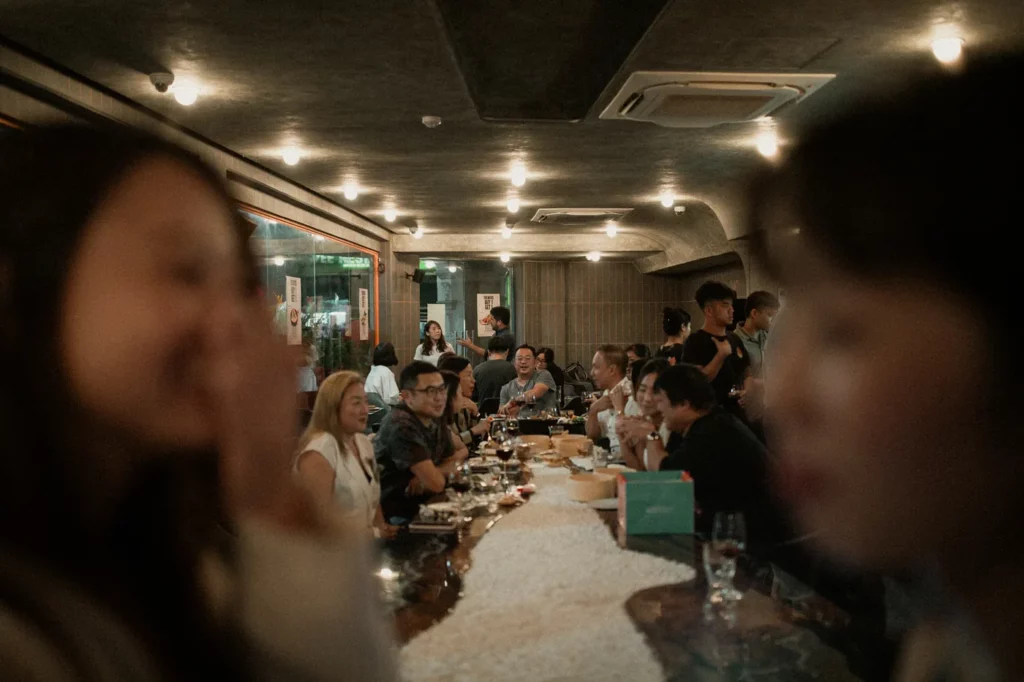
At the session, we invited our guests to co-create a piece of AI art, with a focus on envisioning how Geylang will be like in 50 years. Each guest was given the opportunity to share their thoughts on the future of Geylang from their respective standpoints, be it that of a new or existing business, a resident, or a member of the local community at large. Much like how one peels the layers off the iconic Lapis Sagu, we peeled back the layers that make for Geylang’s eclectic charm and painted it — and its dwellers — with colour and vivacity.
The inputs from the activity were collated and loaded onto an AI art generator, MidJourney, to form the final art piece. Each guest was offered a fragment of the art piece in the form of an NFT.
Much to our amusement — but not to our surprise — food was on everyone’s mind. Durians in particular was a popular response in the activity, with one cheeky attendee suggesting that the future Geylang should have a durian museum.
Some attendees considered that perhaps placemaking Geylang would gentrify the area. However, this is not the typical neighbourhood rejuvenation project. In our efforts to change public perception of the neighbourhood, our approach will not be to sanitise the district. Rather, we seek to amplify the voices and narratives that already exist within the community, but are currently overshadowed by stereotypes of the red light district.
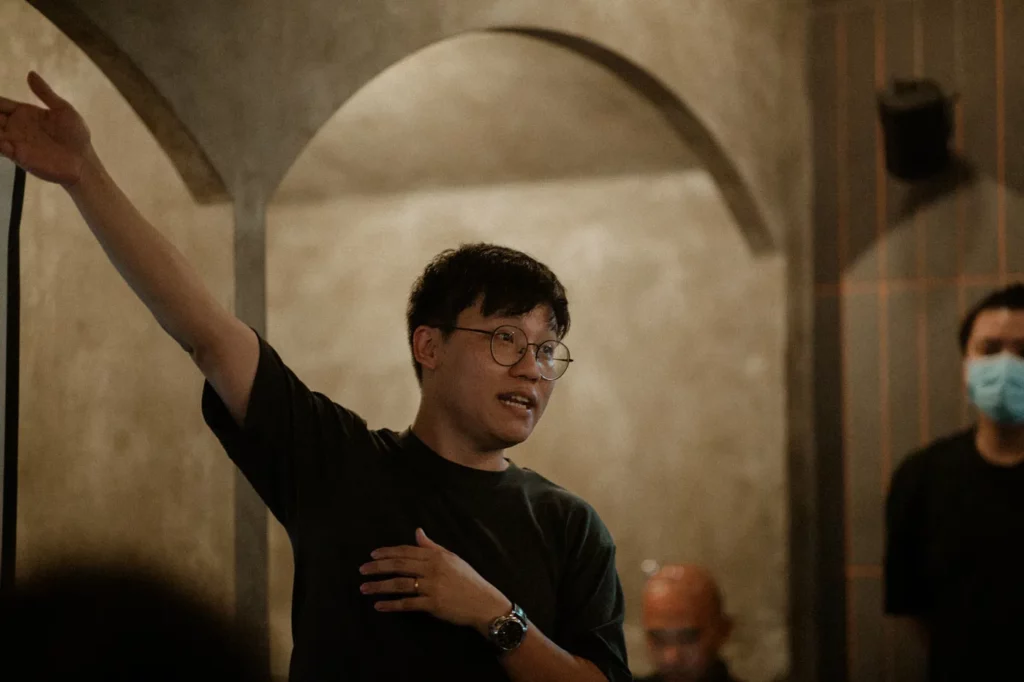
Kok Yong, our Co-Founder, once told us, “Within Geylang, there is an entire community of regular people and families, businesses, clans, and religious groups — much like any other district in Singapore. These ordinary members of the community are worth celebrating.”
From our perspective, Geylang is more than just a supper spot or a hub for vice; it is a district with its own unique identity, community, and spirit.
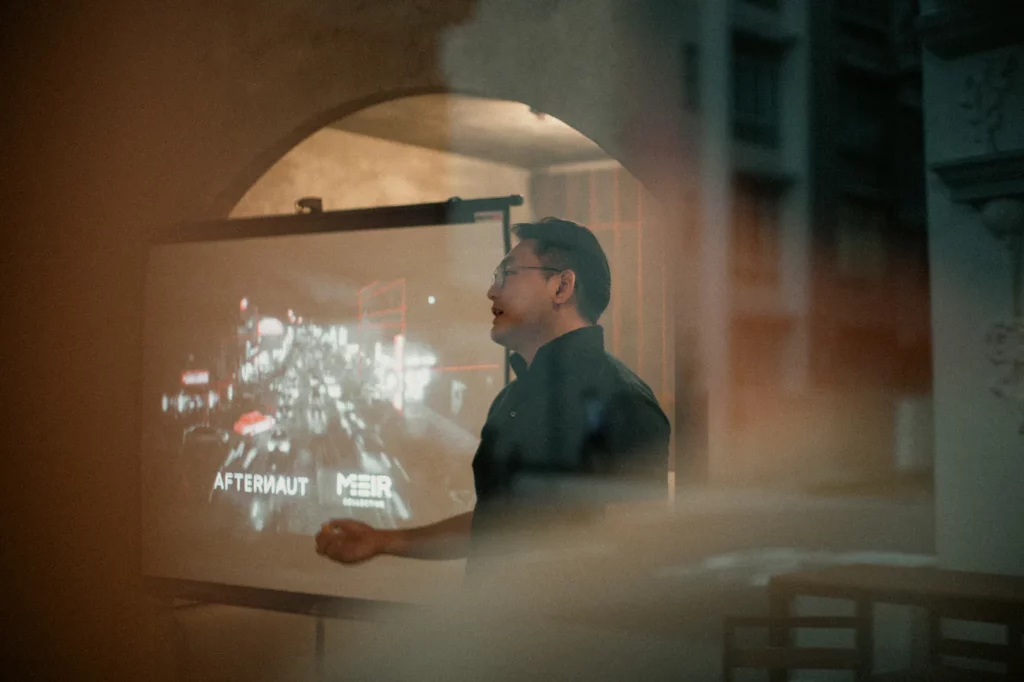
Our partners at MEIR Collective are of the same mind. Sebastian, Chief Placemaker of MEIR Collective, shared, “In developing the urban fabric of this cultural neighbourhood, MEIR Collective and the Afternaut intend to conserve Geylang’s unique heritage and flair while making it relevant and meaningful for future generations.”
Since embarking on this project, we have always kept in mind that our goal is to find balance between preserving Geylang’s unique heritage and sparking a community that is meaningful and relevant for Singaporeans today and in the future. After all, the initial spark that caught our attention was the rich and vibrant history of Geylang.
The launch party also featured an assortment of drinks and canapes with an Asian twist, kindly provided by newly launched cafe & the Hare — heritage brand JiXiang Confectionery’s first cafe concept.
The shophouse in which the party was held is one of the three properties in Geylang owned by MEIR Collective today. Besides this shophouse at 483 Geylang Road, MEIR Collective will also be launching another two developments at 211 and 465 Geylang Road in 2024, with the latter designed by the Afternaut Group.
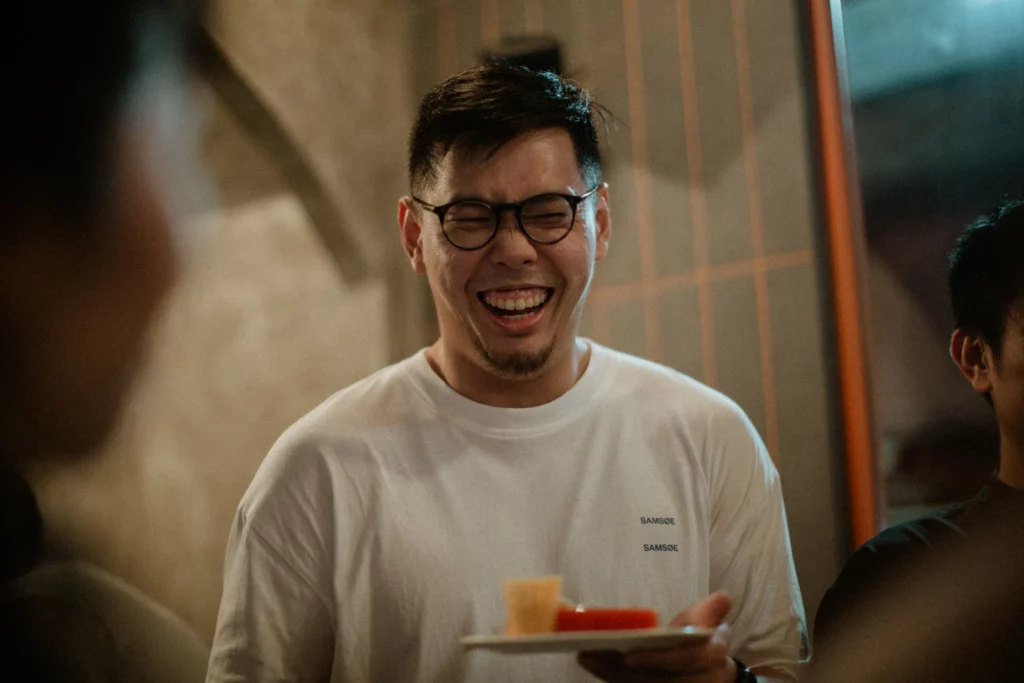
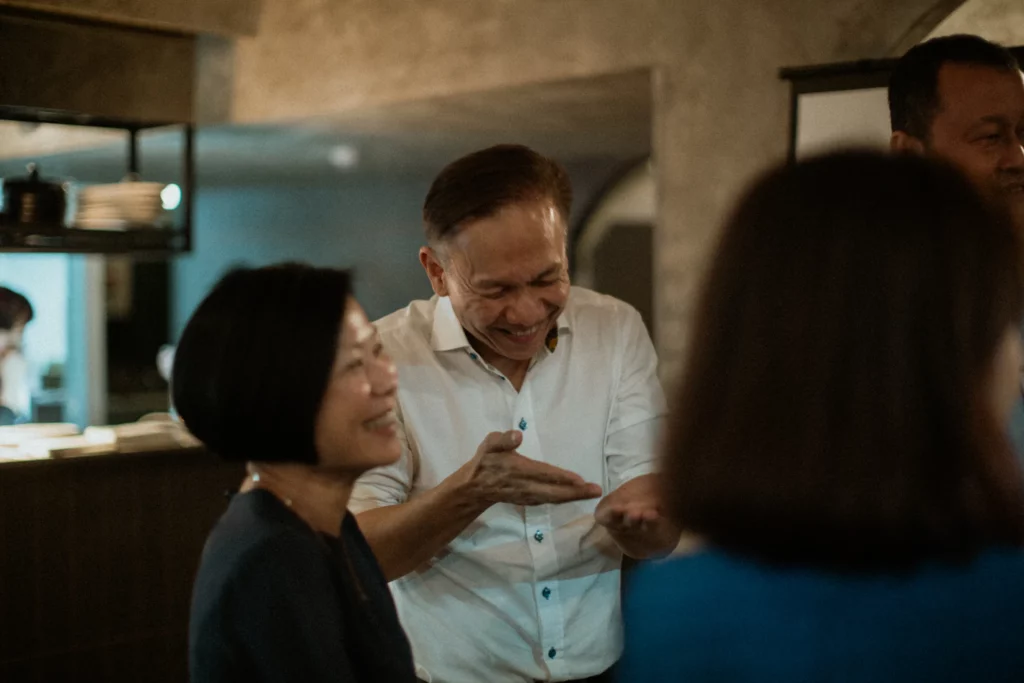
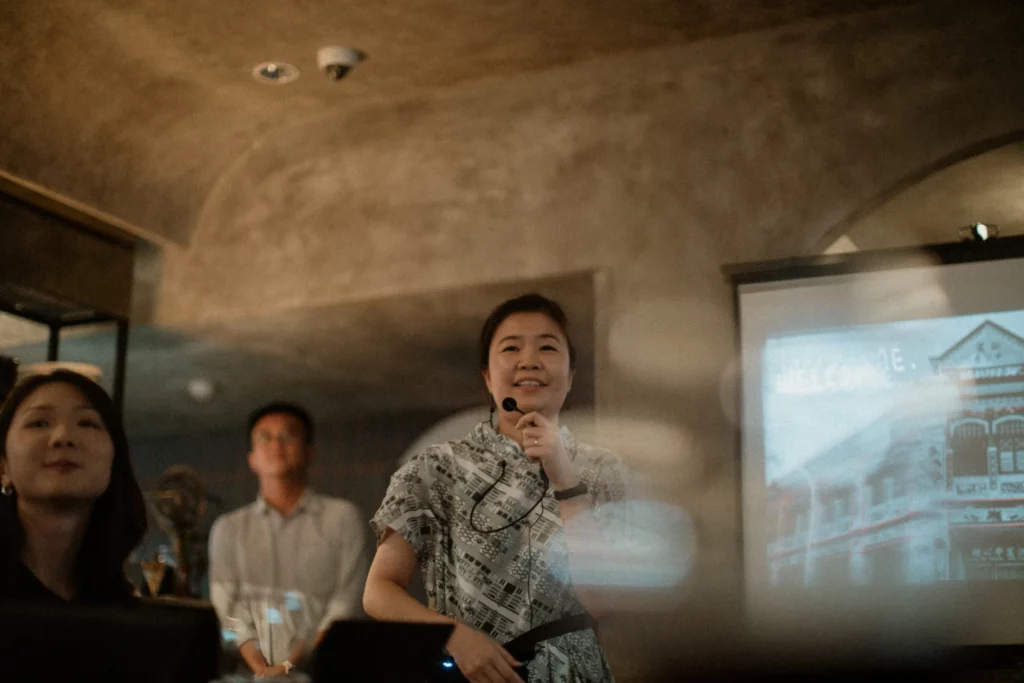
More photos of the session here.
Visit our website www.theafternaut.com and see our other stories here.
What sets one neighbourhood in Singapore apart from the other? For many Singaporeans, it’s the food. Prata from this neighbourhood, chicken rice from that one, satay from another one. But besides food, what else distinguishes neighbourhoods in Singapore from each other?
The built environment industry is here to stay, and beyond the houses we live in, we have spaces in our neighbourhoods and cities that we love. How can we make sure that these spaces are available to us for years to come? And what about the plants and animals in these spaces?
For most part, rewilding initiatives fall under the purview of conservationists, biologists, and landscape architects. What does it have to do with us as placemakers? Well, we’re not entirely sure — yet. But what we are sure of is that just as everyone has a part to play in environmental conservation, everyone has a part to play in the process of rewilding as well.
More than just an exhibition, the Zero One Tech Festival is a placemaking project that merges technology and sites with old uses into something valuable.
The Afternaut Group Pte Ltd. 2024


